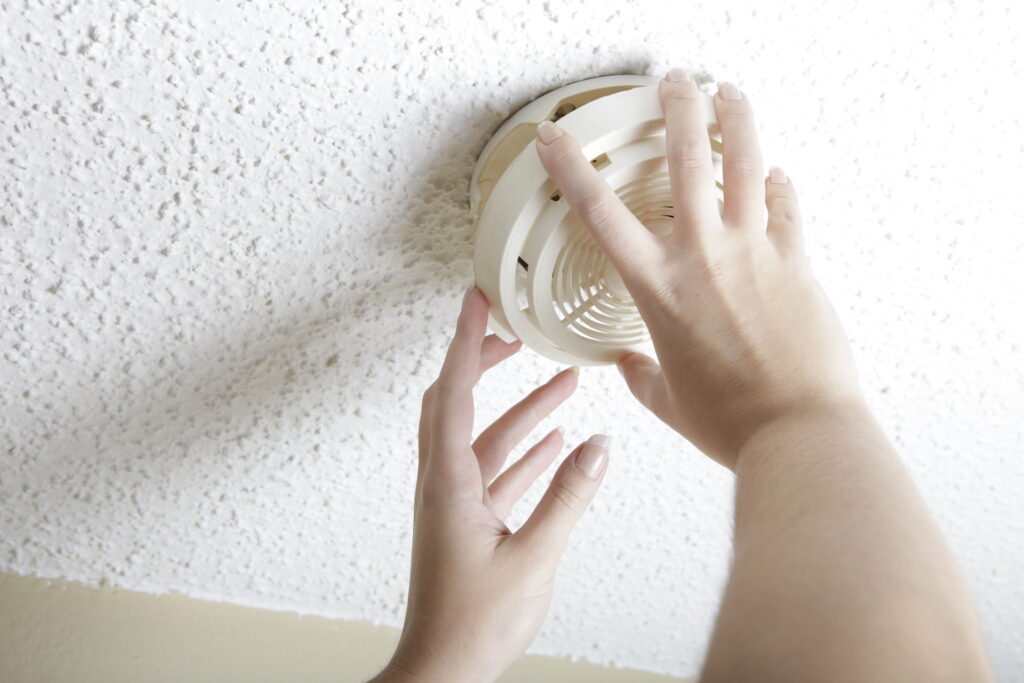Few things are as critical in home safety as functional smoke and carbon monoxide (CO) detectors. These small devices greatly protect your family and property’s health from the dangers of fires and invisible, odorless CO gas. But how do you know when to replace them, and why should you leave this task to the professionals? Let’s look into these questions to understand why you should know when to test and replace carbon monoxide and smoke detectors in your home.
When Is it Time to Replace Smoke Detectors and Carbon Monoxide Detectors?
Smoke and CO detectors are designed to save lives but don’t last forever; most only last for 8-10 years. However, it’s essential to check the manufacturer’s recommendations, as they vary. Additionally, if your smoke detector starts beeping intermittently or doesn’t respond to test buttons, it’s a clear sign that it needs replacing.
CO detectors also have a lifespan of around 5-7 years. Like smoke detectors, they may emit warning signals or display error codes when they need replacement. It’s crucial not to ignore these warnings, as CO poisoning can be deadly.
How Does a Smoke Detector Work?
Smoke detectors are designed to detect the presence of smoke particles in the air, signaling a potential fire. They typically operate using one of two methods:
- Ionization Detectors: These detectors use a small amount of radioactive material to ionize the air inside the detector. When smoke enters the chamber, it disrupts the ion flow, triggering the alarm.
- Photoelectric Detectors: Photoelectric detectors use a light source and a light sensor. When smoke enters the chamber, it scatters the light, causing it to hit the sensor and activate the alarm.
Combination smoke detectors may use ionization and photoelectric technologies for more comprehensive coverage.
How Does a Carbon Monoxide Detector Work?
Carbon monoxide detectors are crucial for detecting this colorless, odorless gas that can be produced by malfunctioning fuel-burning appliances.
They operate using one of these methods:
- Electrochemical Sensors: These sensors use a chemical reaction between CO and electrodes to produce an electrical signal, triggering the alarm when CO levels are hazardous.
- Biomimetic Sensors: Biomimetic sensors mimic how hemoglobin in the blood reacts to CO. When CO binds to the sensor, it triggers an alarm.
- Metal Oxide Semiconductor Sensors: These sensors detect CO by changes in electrical resistance when CO molecules interact with a tin dioxide film.
Each type of CO detector has its advantages, and some models combine multiple sensor types for increased accuracy.
Signs it’s Time to Replace Your Smoke and Carbon Monoxide Detectors
Knowing when to replace your detectors is crucial for maintaining a safe home environment. Look out for these signs indicating it’s time for a replacement:
- As mentioned earlier, both smoke and CO detectors have a limited lifespan. Replace them according to the manufacturer’s guidelines.
- If your detectors start beeping intermittently, displaying error codes, or not responding to tests, it’s time for a new unit.
- Cracks, discoloration, or other physical damage to the detectors can affect their functionality and reliability. Therefore, it is important to replace damaged units promptly.
- Some modern detectors have built-in end-of-life indicators that notify you when they need replacement. Pay attention to these warnings.
Let the Pros Handle the Testing and Replacements
While it might be tempting to handle detector maintenance yourself, there are compelling reasons to leave it to the professionals:
- Expertise: Professional technicians have the knowledge and training to test and install detectors, ensuring they function optimally.
- Compliance: In many jurisdictions, regulations govern the installation and maintenance of smoke and CO detectors. Professionals can ensure compliance with these regulations.
- Safety: Working with electrical devices and potentially hazardous gases requires caution and expertise. Professionals have the tools and protocols to handle these tasks safely.
- Warranty: Some detectors have warranties that may be voided if not installed or maintained by authorized professionals. Hiring professionals protects your warranty coverage.
Maintaining functional smoke and carbon monoxide detectors is vital for home safety. Knowing when to replace them and calling the professionals are the best ways to protect your family from a highly preventable disaster. Stay proactive, stay safe!
Contact JN Electrical Temperature Control, Inc., and you’ll “Feel the Difference”!


